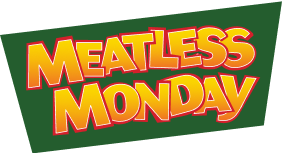A healthy diet doesn’t require calorie restrictions, a commitment to salads, or the elimination of certain foods. On the contrary, the ideal eating pattern is balanced and incorporates a variety of minimally processed fruits, vegetables, whole grains, nuts, seeds, and proteins. Using a range of ingredients provides the body with the nutrients it needs to function properly. Using a few different strategies and techniques, anyone can easily add more beneficial foods to their weekly meal plan.
How to incorporate more healthy plant-based foods into every meal
Boost meals with beans
Beans are rich in protein, fiber, and essential nutrients. They’re also inexpensive, tasty, and a breeze to prepare. For many recipes, you can use beans and lentils instead of sausage, ground beef, taco filling, or meatballs. Beans can also be the primary protein in dishes such as stir-fries, curries, pastas, or chilis. They’re also the perfect consistency to form into veggie burger patties or a meatloaf.
Use the half-plate method
Making half the dinner plate vegetables is a simple way to eat more of them. Try using different cooking methods when preparing vegetables, like roasting, grilling, or air-frying. To give vegetables an extra boost of flavor, add fresh herbs, spices, citrus (like a squeeze of lemon), miso paste, or sauces, like pesto, soy sauce, barbecue sauce, or sriracha. Pairing sweet and salty flavors is another way to make vegetables more exciting.
Swap out meat with a plant-based alternative
The qualities that make meat appealing—the taste, the chew, the sizzle—can often be produced with plant-based ingredients. Use umami-rich foods, different seasoning blends, ingredients with chewy textures, and packaged meat alternatives to mimic the essence of meat-based dishes. Mushrooms, beans, eggplant, tofu, seitan, and plant-based meats are all great ways to satisfy cravings for meat.
Use more whole grains
Simple one-for-one swaps can make your favorite meals healthier. To add protein and fiber to your diet, use whole-grain foods like multigrain or whole wheat bread, brown rice, farro, quinoa, or whole wheat pasta in place of refined bread, white rice, and refined pasta.
Enjoy healthier swaps for snacks and desserts
Making healthy snacks and desserts is a simple and satisfying way to eat more nutritious foods. Blending frozen bananas with berries results in a low-sugar sorbet, while baking chickpeas and tossing them in spices makes for a quick and crunchy snack in lieu of jerky or processed deli meat. Sweet potato fries, nuts, chia pudding, veggies and dip, air-popped popcorn, and homemade granola and trail mix are all great alternatives to packaged foods that are high in sugar, salt, and fat.



